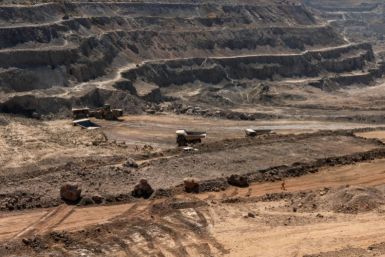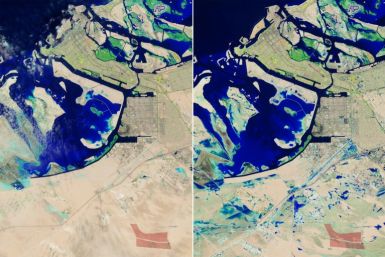Commodities: Oil’s Surge Starts To Worry
Very quickly, the rising price of oil and petrol has emerged as the most significant obstacle to the nascent recovery in global economies and markets strengthening in the next few months.
Australian petrol prices are tipped to rise above and then stay above $US1.50 a litre this week, so watch out for the usual run of cynical media reports and moans about nasty oil companies.
The price of oil has continued to track higher, largely on the back of increasing tensions regarding Iran's nuclear program, plus the recent slide in the value of the US dollar.
As a result global prices are now at levels not seen for months.
In London Brent April crude rose $US1.85 to close at $US125.47 a barrel, the highest settlement since April 29.
Friday's $US125.55 peak was the highest intraday price since May 2.
Brent crude prices rose nearly 5% last week.
In New York on Friday night crude-oil futures rose over $US109 a barrel, leaving the price of West Texas Intermediate style crude up 6.3% for the week and 11% for the month so far.
Nymex crude for April delivery rose $US1.94, or 1.8%, to $US109.77 a barrel on New York.
It was the New York price's highest since May 3, when oil closed at $US111.05 a barrel.
Prices hit $US113.93 a barrel on April 29, a 52-week high, as concerns about geopolitical tensions in the Middle East had also taken center stage.
West Texas Intermediate is now up from a low of $US76 last October and the Asian Tapis oil price rise above $US133 a barrel, its highest since mid 2008.
The Tapis price will rise towards $US135 a barrel today after the price of Brent crude in London jumped past $US125 a barrel on Friday night.
(The Brent crude is now considered to be the best indicator of global oil prices and supply and demand because of oversupply and other problems peculiar to the US market and the price of WTI style crudes.)
At current levels the Tapis price implies a rise in average petrol prices in Australia to around $1.53 a litre.
This is still below the all time high of $1.65 a litre reached in mid 2008, but the problem is that the latest rise will start to act as another drag on consumer spending and economic growth.
The same applies globally.
The AMP's chief economist, Dr Shane Oliver said on the weekend "As we saw last year the rise in the oil price associated with various civil wars in the Middle East played a significant role in the global growth slowdown seen from mid year".
"So the surging oil price is a real risk worth keeping an eye."
NRMA head, Wendy Machin said at the weekend motorists had been paying around $1.43 a litre for regular unleaded at the last high point of the price cycle on December 7.
"Now, just 10 weeks later, a nine-month high in the price of oil will mean that by the high point of the next price cycle, motorists will be paying an average price of around 153¢ per litre," Ms Machin said.
And it's not just Australia where higher petrol prices are concerning.
In the US (which has higher unemployment, weaker consumer spending and confidence and a slow recovering economy), the concern is that the recent lift in petrol prices will weaken the economy by mid -year, as happened in 2008.
US petrol prices hit $US3.65 a gallon on Friday, up 13% so far in 2012. The key price level is $US4 a barrel. At that price the US economy and consumers will come under enormous pressure, judging by what happened in 2008.
In a bid to curb the rapid rise in prices, the US government has suggested it could release oil from its reserves, and Saudi Arabia has raised oil exports in recent days.
Both were given additional importance by Friday's nine-month highs for oil.
Oil prices are rising on fears that Iran might stop oil exports to some European nations after the European Union last month imposed an oil embargo on the Middle-Eastern oil producer and the spat between Iran and Western powers continued.
The lower dollar has also provided support for higher oil prices as the euro rose to a three month high ahead of the ECB's auction of three year bank loans on Wednesday, while the yen continued to fall for another week.
The International Energy Authority issued a gloomy report on Iran's uranium fuel production which increased fears of a supply disruption and concerns Israel, which has threatened Iran with pre-emptive strikes on nuclear sites, could attack in the near future.
That would send shockwaves across the region and almost certainly drive oil prices even higher.
Oil traders saw Saudi Arabia has lifted exports by 20% in the past week and offered additional crude to its biggest customers to try and put a lid on world prices.
And the US government said for the first time Friday that it could make another release of oil from the strategic reserve to try and dampen the surge in world prices.
Treasury Secretary Timothy Geithner told CNBC on Friday there may be a case for using the reserve. "Obviously Iran can do a lot of damage to the global economy," Geithner said. "We are working very carefully to try to minimize that risk."
The fear of tightening supplies, including a threat from Tehran to close the Strait of Hormuz -- the main Gulf oil shipping lane -- have lifted oil prices 11% this year, putting political pressure on President Barack Obama, who is running for re-election in November.
The International Monetary Fund has also warned higher oil prices are a rising threat to the global economy.
Gold prices dipped on Friday, ending three days of gains and despite more weakness in the US dollar.
Silver also fell on the day, but rose on the week, while copper rose for the day and had a strong week.
Comex April gold for April fell $US9.90, or 0.6%, to end at $US1,776.40 an ounce in New York.
On the week, gold jumped $US51, or 2.9% as those fears about Iran and oil prices, plus the weakness in the greenback against the euro and yen, saw investors pile into commodities.
Gold on Thursday settled at its highest level since November 11 of last year, while many major stockmarkets also reached the highest levels late last week since last November.
Gold last settled above $US1,800 an ounce last September 21, as it was falling from the record $US1,891.90 in August.
March silver shed 22c, or 0.6%, to settle at $US35.34 an ounce on Comex in New York.
In the week, however, silver prices jumped 6.4%.
Copper rose on Friday as investors took their lead from the weakening greenback and falling stocks of the metal on Shanghai.
Comex copper for March delivery added 6c, or 1.5%, to end at $US3.86 a pound on Friday.
That left the metal with a 4% gain for the week.
Copper stockpiles registered on the Shanghai Futures Exchange have fallen for the first time since early December, according to analysts at Commerzbank on Friday.
The two surveys of Chinese manufacturing will impact copper market sentiment on Thursday and Friday.
Copyright Australasian Investment Review.
AIR publishes a weekly magazine. Subscriptions are free at www.aireview.com.au






